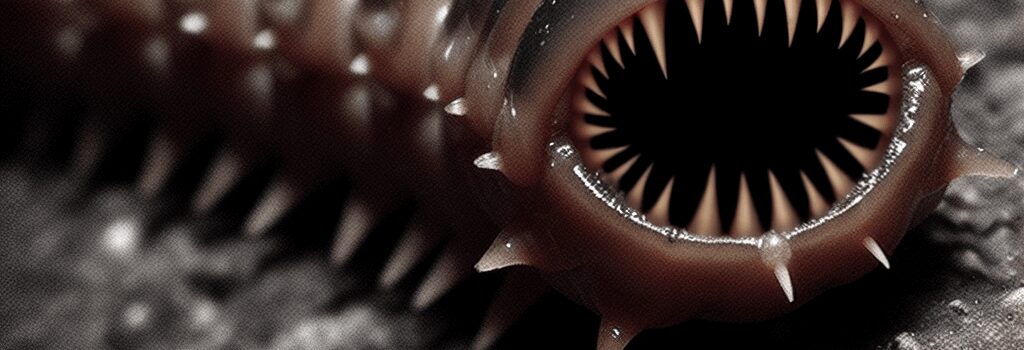Screwworms Are Coming: A Horrifying Threat

By popular demand, and with fresh urgency: the New World screwworm (Cochliomyia hominivorax) is on the march again. After decades of containment south of the Darién Gap, this flesh-eating fly is advancing through Mexico toward the US border. Federal agencies are deploying millions of sterilized males by air—and now by drone—to avert a looming livestock and public-health catastrophe.
Screwworm Biology and Life Cycle
Screwworms are obligate ectoparasites whose larvae feed exclusively on living tissue. Females deposit 200–400 eggs in wound margins or natural orifices. At 27 °C, eggs hatch in 8–12 hours, unleashing neonate larvae. Over a 5–7 day feeding period, larvae burrow in spiral patterns—hence “screwworm”—creating deep, ulcerative lesions. After feeding, mature larvae drop to the soil, pupate for 7–10 days, and emerge as adults with a 10–14 day lifespan. Females mate only once, storing sperm to fertilize up to 2,800 eggs lifetime.
Eradication History and Sterile Insect Technique (SIT)
Between 1953 and 1966, the US Department of Agriculture (USDA) and Pan American Health Organization implemented SIT at unprecedented scale. Male larvae were irradiated with 40–50 Gy of gamma radiation, sterilizing them without affecting mating competitiveness. Facilities in Tuxtla Gutiérrez, Mexico, and Pacora, Panama, produced over 100 million sterile pupae per week at peak. Aircraft released 500–800 sterile flies per square kilometer, collapsing wild populations by >99% yearly.
Current Resurgence and Response Operations
In mid-2022, entomological surveillance detected screwworm incursions at the Darién frontier. By September 2024, outbreaks in Honduras and southern Mexico prompted USDA to shift its aerial SIT program northward. As of May 2025, sterilized releases—now incorporating VTOL drones for localized drops—exceed 120 million flies per month across Oaxaca and Chiapas. Secretary Brook Rollins reports collaboration with Mexico’s SENASICA to maintain a “synthetic biological barrier” along the Isthmus of Tehuantepec, aiming to push wild populations back to Panama.
Genomic Surveillance and Innovative Diagnostics
Modern control leverages portable qPCR assays and next-generation sequencing to detect low-density infestations. At the University of Florida, Dr. Jane Alvarez leads genomic surveillance, sequencing mitochondrial COI haplotypes and screening for insecticide-resistance mutations (e.g., kdr alleles). Field teams deploy handheld loop-mediated isothermal amplification (LAMP) devices to confirm Cochliomyia hominivorax within 30 minutes of sample collection.
Climate Change and Ecological Considerations
Climate-niche models (MaxEnt) predict that average warming of 1–1.5 °C by 2030 could expand suitable habitat into southern Texas and Florida. Increased drought and heat stress in livestock compromise skin integrity, raising myiasis risk. Dr. Luis Herrera-Estrella, an ecologist with the Smithsonian Tropical Research Institute, warns, “Rising temperatures and shifting rainfall patterns will complicate containment and extend transmission seasons by 4–6 weeks annually.”
Future Directions in Control Strategies
Next-generation biocontrol explores Wolbachia symbiont introduction and CRISPR-mediated gene drives to bias sex ratios or induce lethal phenotypes. A new mass-rearing facility under construction in Tapachula, Chiapas, will include automated pupae sorters, AI-driven sex-separation cameras, and remote telemetry for release logistics—scaling output to 200 million sterile males per month by 2026.
Clinical and Veterinary Impacts
In Panama during late 2024, over 18,000 animal cases (cattle, goats, deer) were reported, with average weight loss of 15 kg per animal and economic losses exceeding $60 million in three months. Human myiasis remains rare but devastating: surgical extraction of hundreds of larvae often requires general anesthesia, debridement of necrotic tissue, and broad-spectrum antibiotics to prevent secondary bacterial infections. CDC Medical Officer Rebecca Chancey notes, “Larvae attach with intersegmental hooks; forceful removal risks additional tissue trauma, so we’re piloting endoscopic vacuum extraction techniques.”
Coordination and Policy Challenges
Effective containment hinges on cross-border data sharing and sustained funding. The 2025 USDA budget earmarked $50 million for SIT operations and diagnostic infrastructure. However, varied topography, language barriers in indigenous regions, and unregulated livestock movement through informal checkpoints hinder surveillance. International Working Group on Insect Pest Control (FAO/IAEA) is drafting new protocols for regional biosecurity harmonization.
Conclusion
The re-emergence of screwworms underscores the fragility of biological barriers and the need for innovation in pest control. Integrating SIT with genomic monitoring, remote sensing, and novel genetic tools offers the best path to safeguarding livestock, wildlife, and humans. The coming months will test whether these technologies can outpace one of nature’s most gruesome parasites.
- Maintain monthly releases of ≥100 million sterile males along the Isthmus of Tehuantepec.
- Scale portable molecular diagnostics to frontline veterinary clinics and wildlife reserves.
- Invest in drone-based release systems to reach remote, rugged terrain.
- Forge regional data-sharing agreements to track genetic drift and resistance markers.